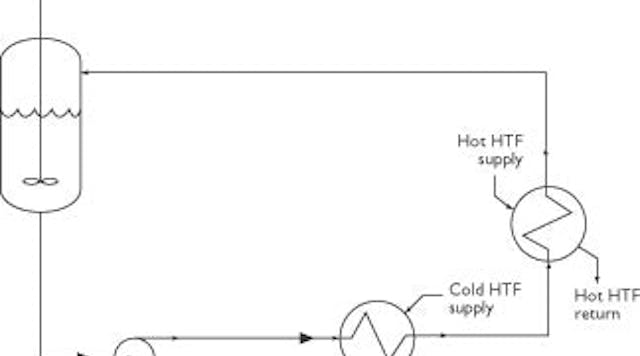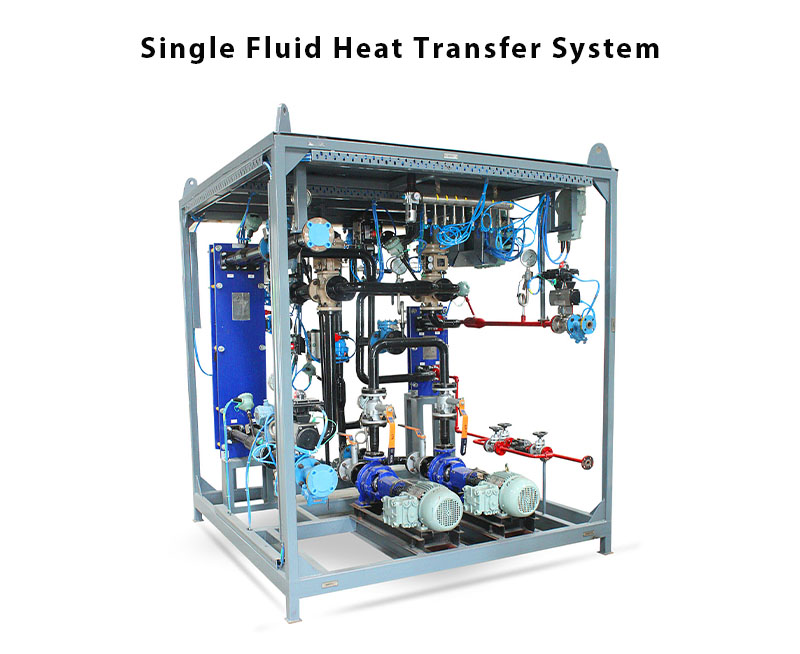Why DVS Heat Transfer Systems Use Nanotechnology to Outperform Traditional Cooling Systems
Innovations in Heat Transfer Equipments: What You Need to Know for Optimum Efficiency
Technologies in Heat transfer systems are transforming performance across different industries. Advanced products like graphene and nanofluids guarantee considerable renovations in thermal conductivity. The assimilation of IoT and maker knowing supplies opportunities for real-time monitoring and improved energy effectiveness. Nonetheless, the landscape of thermal monitoring is rapidly developing (DVS Heat Transfer Systems). Recognizing these developments is necessary for attaining perfect system efficiency and sustainability in the future. What details advancements are shaping this change?
Arising Products for Improved Heat Transfer

Advanced Heat Exchanger Layouts
While standard Heat exchangers have actually offered their objective in various applications, advanced styles are currently emerging to fulfill the increasing needs for efficiency and efficiency. These cutting-edge designs, such as plate, shell-and-tube, and finned-tube Heat exchangers, incorporate boosted surface areas and enhanced flow patterns to raise thermal transfer prices. On top of that, compact layouts allow for reduced space demands without jeopardizing effectiveness. Advanced materials, such as compounds and corrosion-resistant alloys, in addition improve durability and performance under extreme problems. Simulation modern technologies and computational liquid characteristics are progressively utilized to refine these designs, ensuring peak Heat transfer characteristics. As industries seek to lessen power intake and maximize output, the fostering of sophisticated Heat exchanger styles is critical in accomplishing these purposes.
The Duty of Nanotechnology in Heat Transfer
Nanotechnology plays a necessary function in improving thermal conductivity within Heat transfer systems. By adjusting products at the nanoscale, researchers have accomplished substantial enhancements in energy efficiency. These improvements not just optimize performance however likewise contribute to even more lasting power services.
Enhanced Thermal Conductivity
Considerable improvements in thermal conductivity have arised with the application of nanotechnology, revolutionizing Heat transfer systems throughout various industries. By integrating nanoparticles into Heat transfer fluids and materials, scientists have actually accomplished amazing increases in thermal conductivity. These nanoparticles, such as carbon nanotubes, graphene, and steel oxides, improve the Heat transfer buildings due to their high surface location and unique thermal features. The resulting compounds exhibit boosted performance in applications ranging from electronic devices cooling down systems to eco-friendly power innovations. The capability to customize the dimension, shape, and composition of nanoparticles enables for optimized thermal administration services. As a result, nanotechnology remains to play a pivotal role in the growth of extra efficient and effective Heat transfer systems, leading the way for boosted industrial applications.
Energy Performance Improvements

Integration of IoT in Heat Transfer Solutions
The combination of IoT in Heat transfer systems presents the implementation of wise sensors that boost operational efficiency. These sensors allow real-time information monitoring, permitting instant modifications and optimizations. This technical advancement has the possible to considerably enhance performance and energy management in Heat transfer applications.
Smart Sensors Implementation
As Heat transfer systems progress, the assimilation of smart sensors with the Web of Points (IoT) has become a transformative technique. These sensing units allow real-time monitoring of flow, stress, and temperature level rates, boosting system performance and dependability. By accumulating and transmitting data, they help with proactive maintenance, reducing the danger of system failures. Additionally, smart sensing units add to power cost savings by refining operational criteria based on environmental conditions. Their ability to assess anomalies and patterns permits educated decision-making, making certain peak performance of Heat transfer systems. As industries significantly embrace this technology, the execution of clever sensing units stands to reinvent how Heat transfer systems are handled, paving the means for higher sustainability and boosted efficiency results.
Real-Time Information Surveillance
Just how can real-time data keeping an eye on improve the efficiency of Heat transfer systems? By integrating Net of Things (IoT) technology, Heat transfer systems can take advantage of continuous data collection from clever sensors. This real-time monitoring permits immediate evaluation of temperature level, circulation, and pressure prices, enabling operators to identify inadequacies promptly. As a result, adjustments can be made to maximize performance, lower power intake, and prolong tools life expectancy. In addition, predictive maintenance can be implemented, lessening unanticipated downtime and costly repairs. The ability to imagine efficiency metrics through control panels improves decision-making, cultivating an aggressive approach to system monitoring. Ultimately, real-time data keeping an eye on not just improves operational effectiveness yet additionally adds to sustainability objectives within commercial procedures.
Power Effectiveness and Sustainability Trends
Energy performance and sustainability fads are improving the landscape of Heat transfer systems, driving development and conformity throughout various markets. Organizations are significantly prioritizing energy-efficient designs to reduce functional costs and lessen ecological influences. The assimilation of eco-friendly energy resources is ending up being extra prevalent, enabling Heat transfer systems to run sustainably while fulfilling regulative demands. In addition, improvements in modern technologies and materials advertise reduced power consumption and boost overall performance. Lifecycle assessments are additionally getting grip, allowing business to review the environmental impact of Heat transfer systems from production to disposal. This concentrate on sustainability not only supports corporate duty but likewise settings organizations competitively in a market where customers significantly prefer green remedies. Subsequently, energy effectiveness and sustainability remain critical factors to consider for future developments in Heat transfer modern technology.
Technologies in Thermal Monitoring Solutions
While the need for efficient Heat transfer proceeds to rise, innovations in thermal administration remedies are arising to deal with both performance and sustainability obstacles. Advanced products, such as phase change products and nanofluids, are being established to enhance Heat transfer effectiveness - DVS Heat Transfer Systems. These materials enhance thermal conductivity and enable much better temperature policy in different applications. In addition, technologies like energetic thermal control systems are acquiring grip, allowing real-time changes to manage Heat flow effectively. These systems add to power savings and minimize the ecological impact of thermal processes. The assimilation of IoT in thermal monitoring assists in tracking and predictive maintenance, making sure enhanced performance and longevity of Heat transfer systems. On the whole, these advancements represent considerable strides towards even more lasting thermal administration methods
Future Directions in Heat Transfer Innovation
Emerging innovations in thermal administration options signify a promising future DVS Heat Transfer Systems for Heat transfer technology. Scientists are significantly concentrating on developing materials with premium thermal conductivity and enhanced power effectiveness. Innovations such as nanofluids, which consist of put on hold nanoparticles, provide substantial improvements in Heat transfer efficiency. Furthermore, the integration of wise products that adjust to differing temperature level conditions is gaining traction, permitting for more receptive and reliable systems. The increase of additive production strategies is likewise making it possible for the style of complicated Heat exchanger geometries that enhance fluid circulation. The execution of equipment learning algorithms is expected to revolutionize the optimization of Heat transfer systems, assisting in anticipating upkeep and performance improvement. Jointly, these developments are positioned to transform the landscape of Heat transfer modern technologies in numerous markets.

Frequently Asked Inquiries

Just how Do I Select the Right Heat Transfer System for My Application?
Choosing the appropriate Heat transfer system includes reviewing application requirements, consisting of temperature level arrays, liquid buildings, and effectiveness requirements. Examining system types, upkeep considerations, and cost-effectiveness also plays a necessary function in making a notified choice.
What Are the Maintenance Demands for Advanced Heat Exchangers?
Maintenance needs for innovative Heat exchangers normally include regular examinations, monitoring for leakages, cleansing of surfaces, and ensuring ideal flow prices. Sticking to supplier guidelines warranties effective procedure and extends the tools's lifespan.
How Do Environmental Factors Affect Heat Transfer Performance?
Ecological variables considerably affect Heat transfer performance. Variations in moisture, temperature, and air movement influence thermal conductivity and convective Heat transfer, ultimately affecting system efficiency and necessitating factor to consider during the style and procedure of Heat transfer systems.
What Security Standards Apply to Heat Transfer Systems?
Safety standards for Heat transfer systems normally consist of standards from companies such as ASME and ASTM. DVS Heat Transfer Systems. These requirements address products, style, and functional practices to assure integrity, performance, and protection against hazards in numerous applications
Just How Can I Fix Usual Heat Transfer System Issues?
Troubleshooting usual Heat transfer system issues involves looking for leaks, ensuring correct fluid circulation, inspecting insulation honesty, and confirming temperature level differentials. Identifying these variables can aid preserve system efficiency and prevent more difficulties.
Nanotechnology plays a crucial function in enhancing thermal conductivity within Heat transfer systems. Significant innovations in thermal conductivity have arised with the application of nanotechnology, revolutionizing Heat transfer systems throughout various markets. Innovations in thermal conductivity with nanotechnology have led the way for remarkable renovations in power efficiency within Heat transfer systems. Power efficiency and sustainability fads are reshaping the landscape of Heat transfer systems, driving technology and conformity across numerous industries. The combination of IoT in thermal administration assists in tracking and predictive upkeep, guaranteeing maximized performance and longevity of Heat transfer systems.